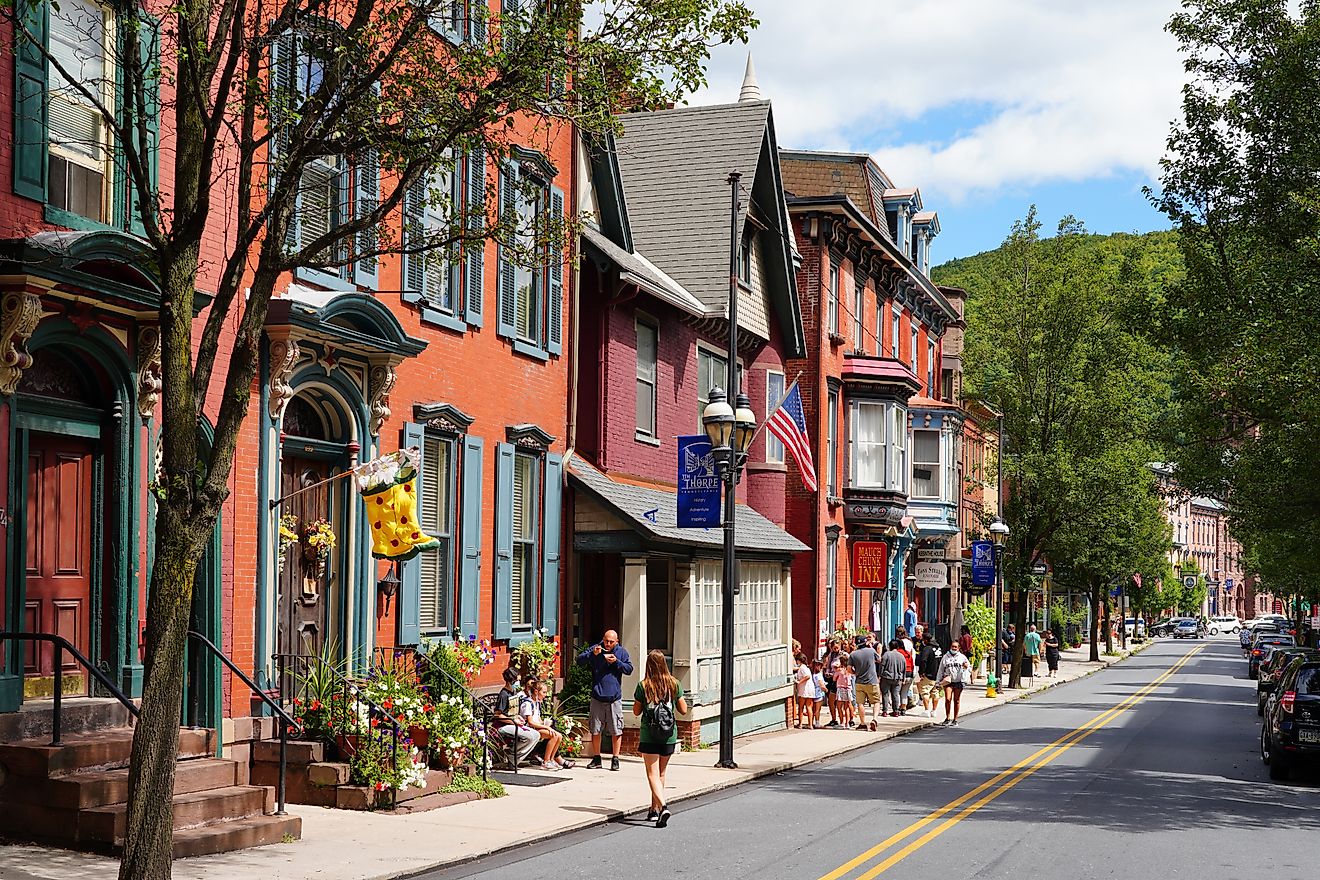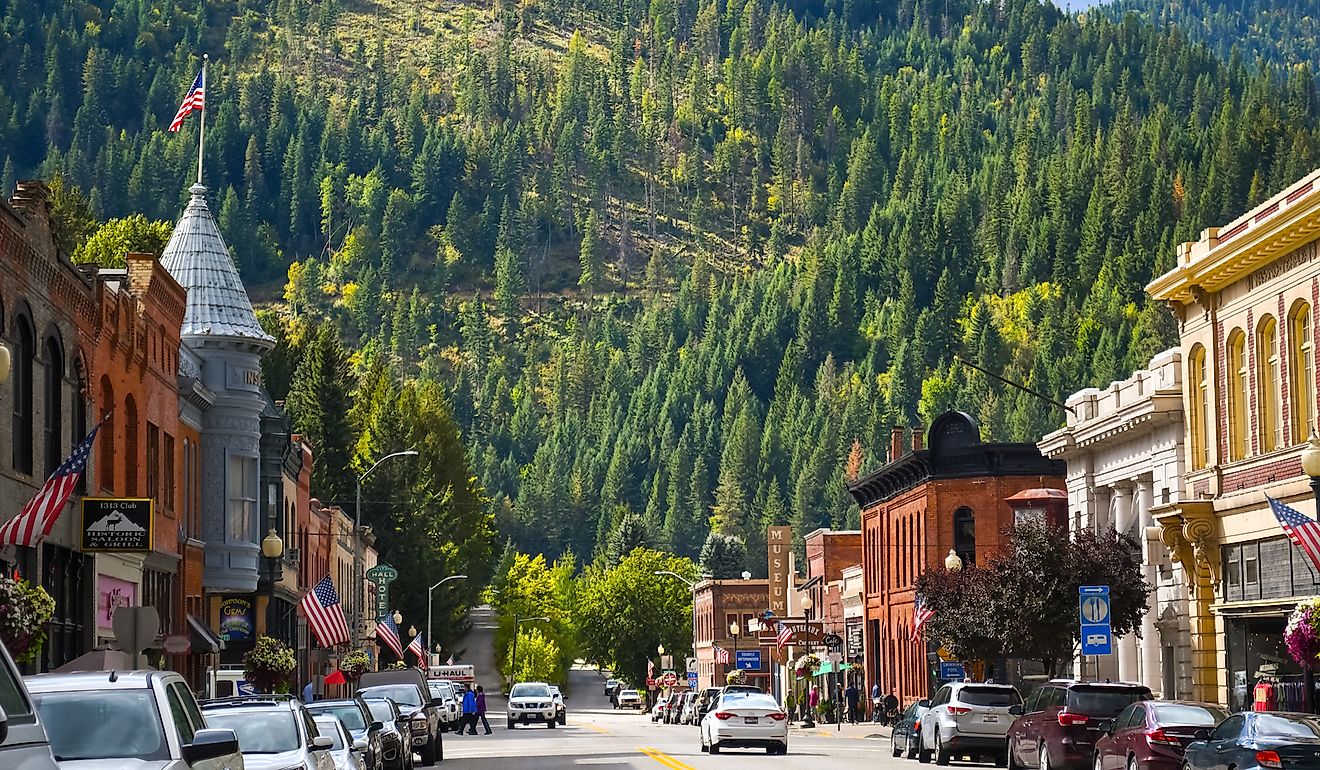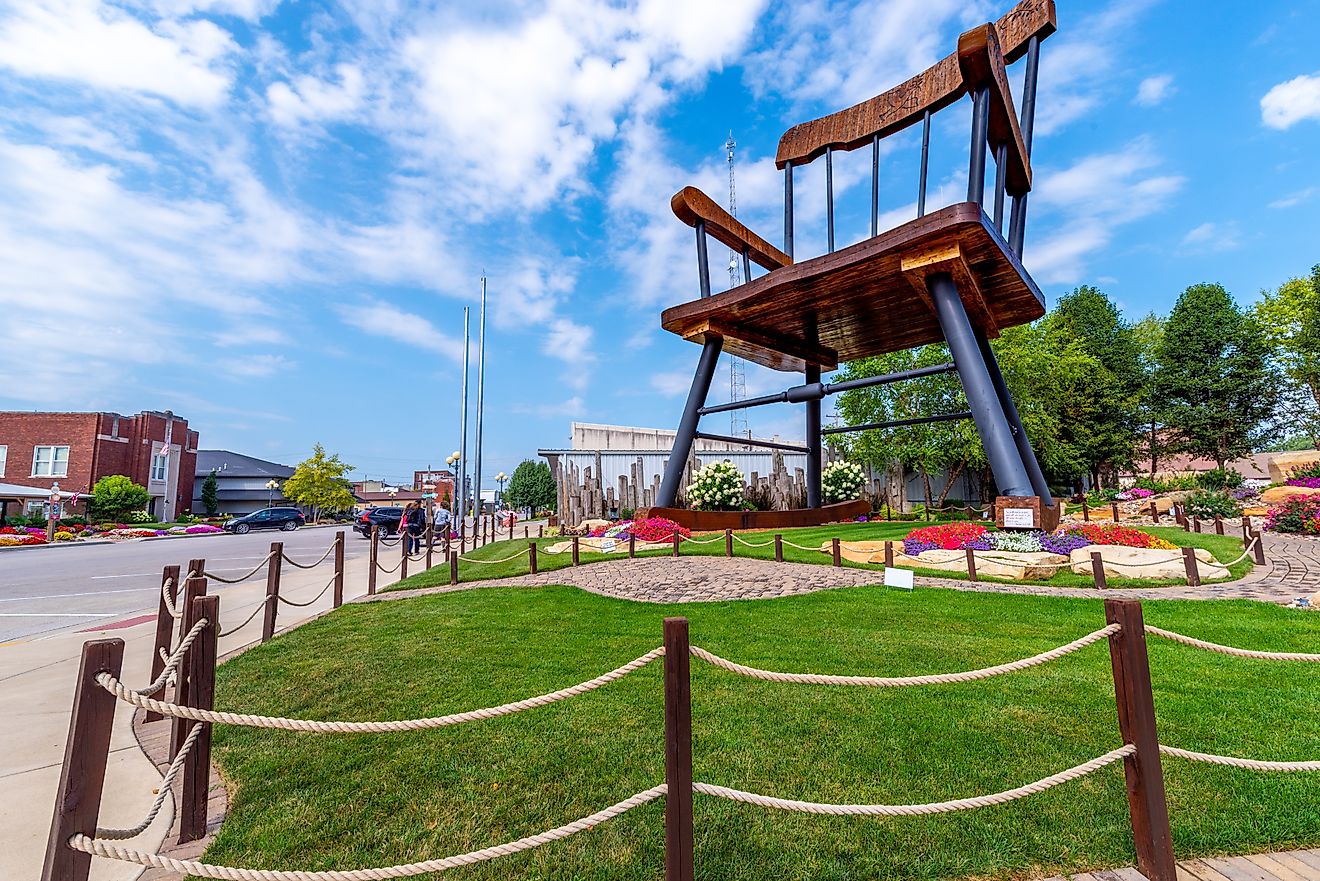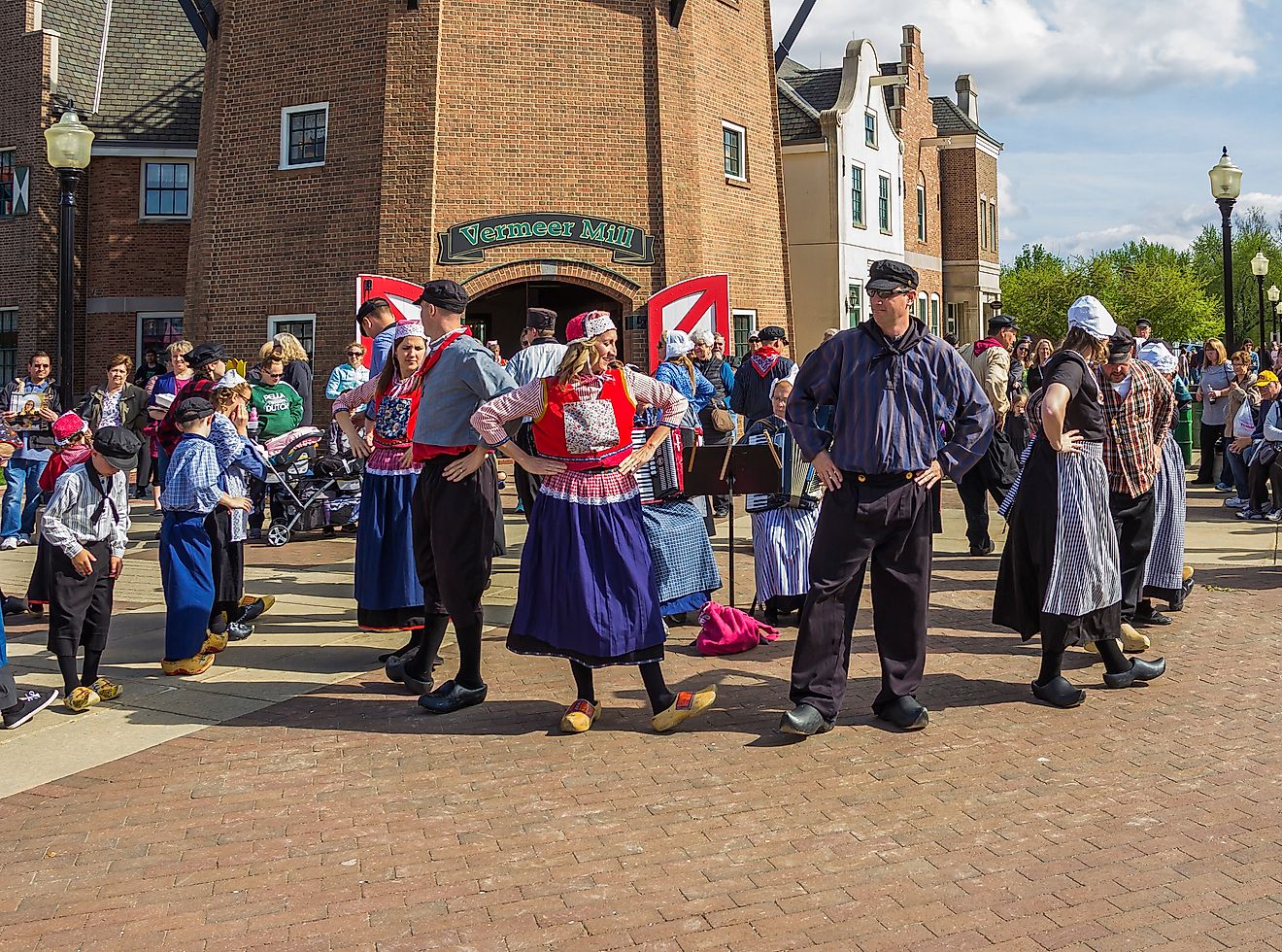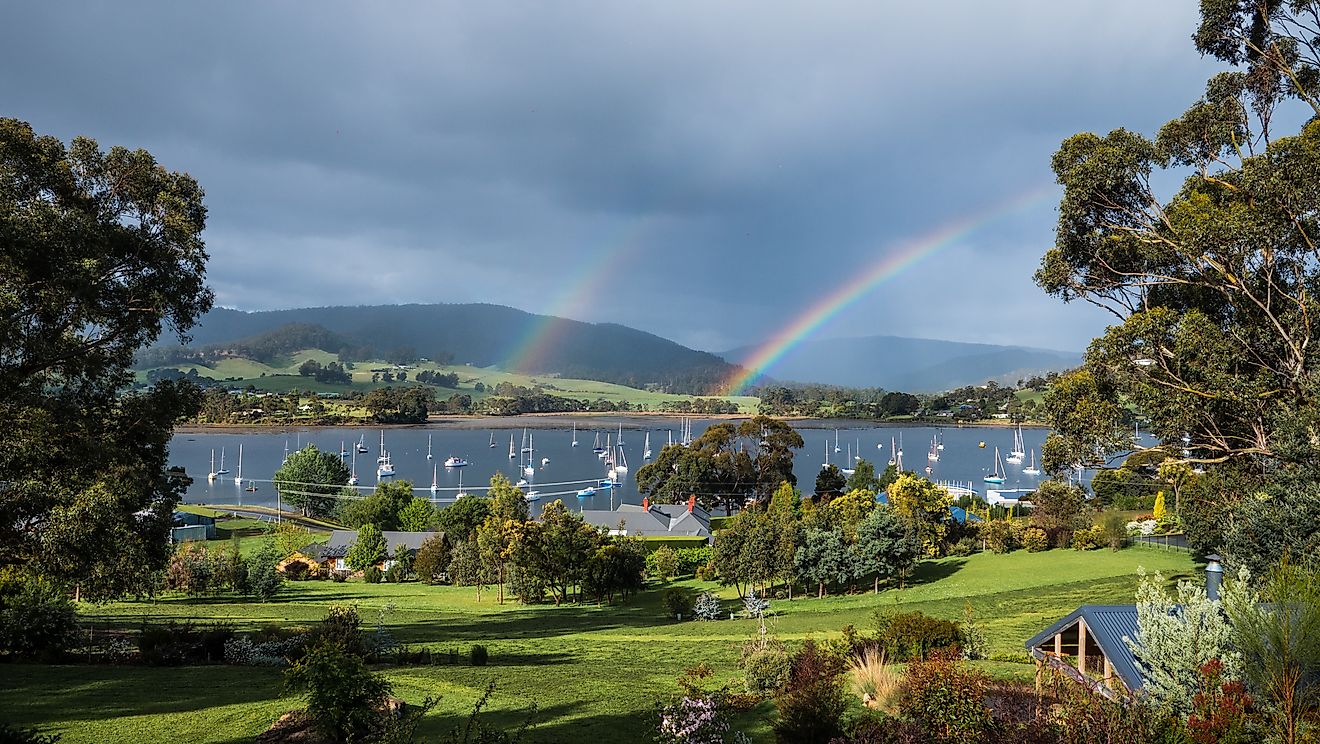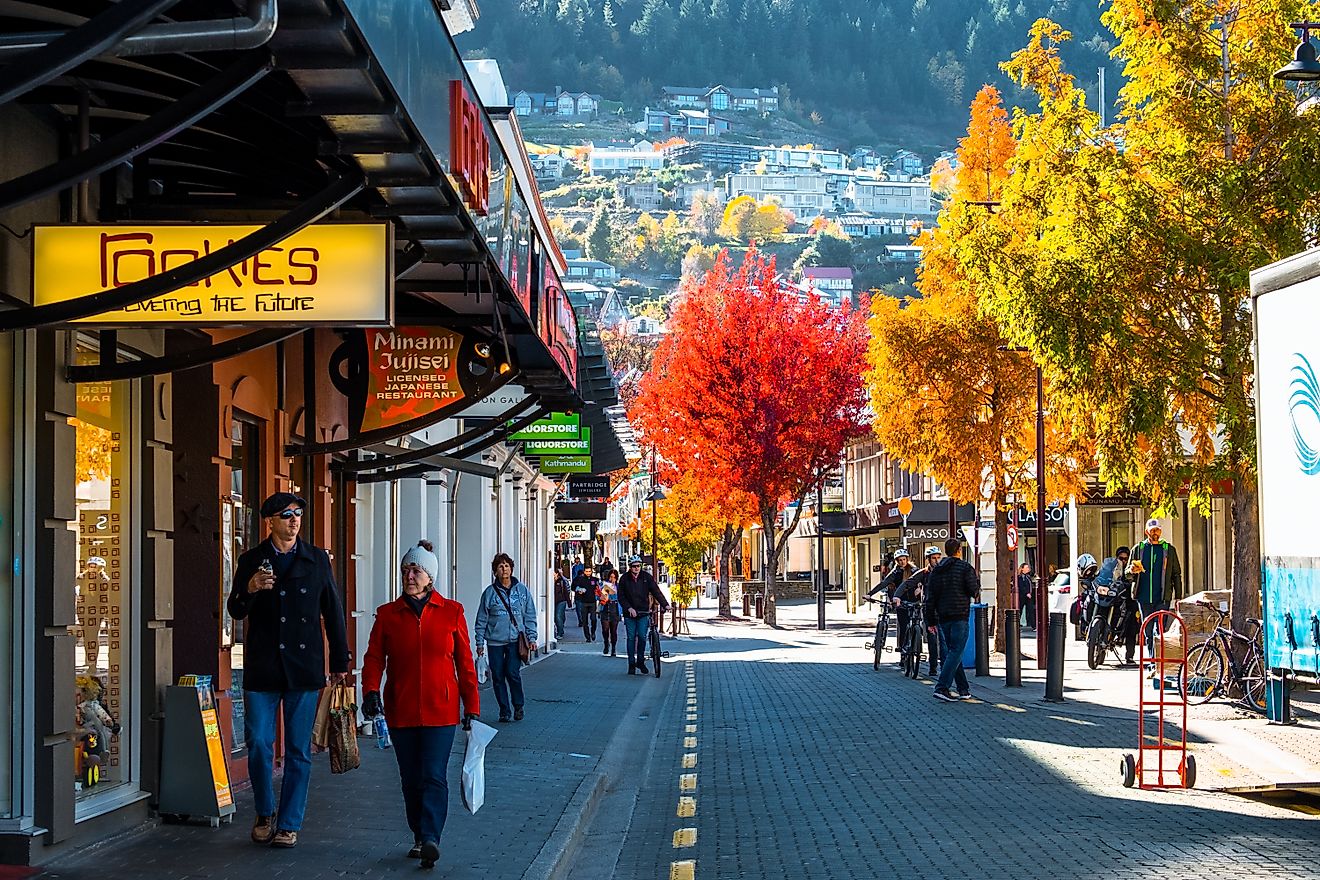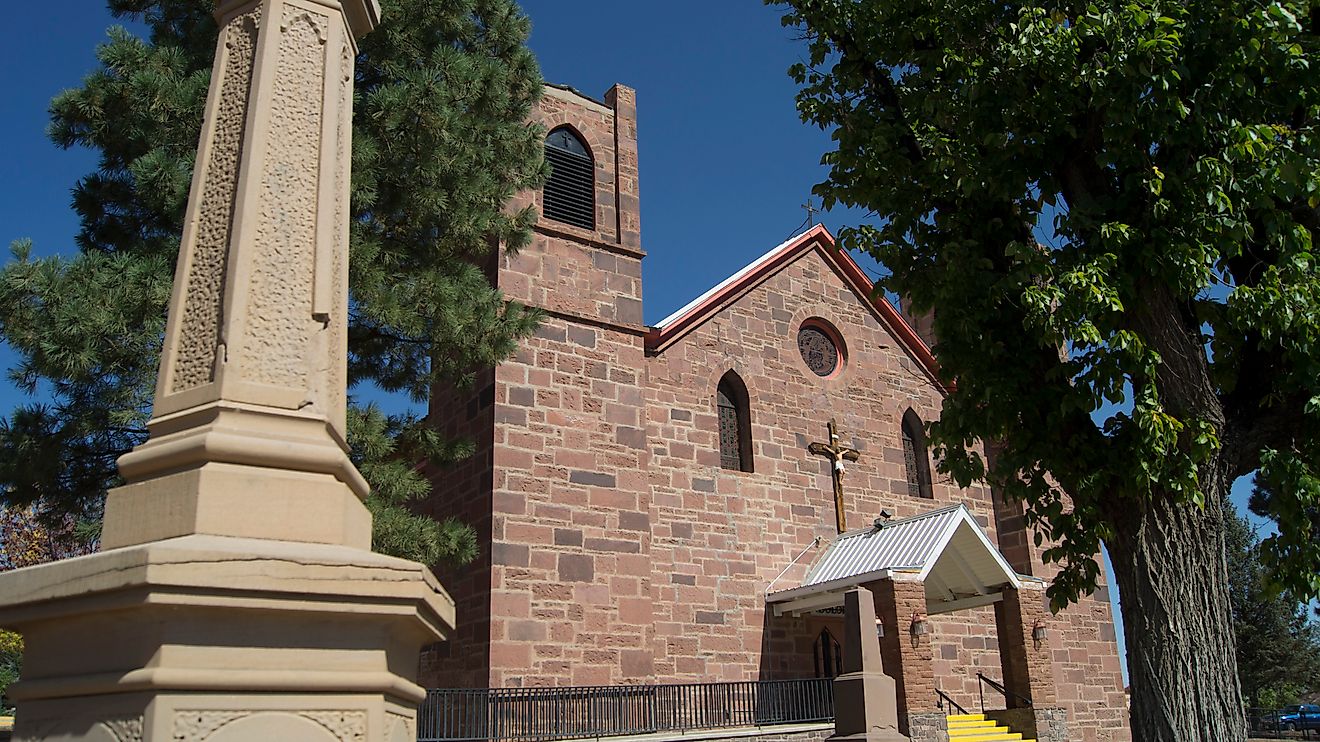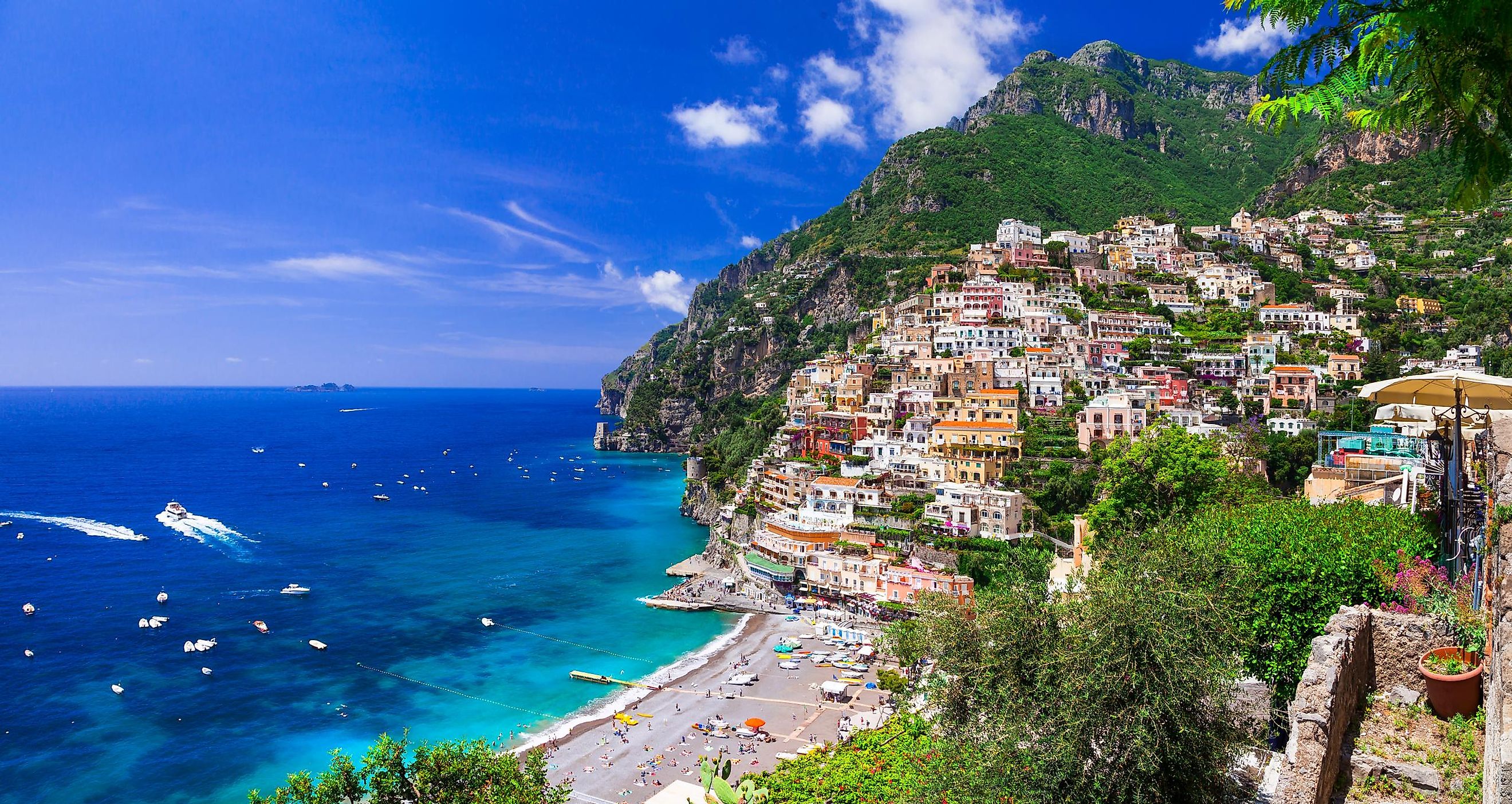
9 Most Charming Small Towns In Italy
Is there any place more charming than Italy? In the heart of the Mediterranean, its cowboy-boot topography is surrounded by sparkling salt waters, save for its north end, which is marked by the cloud-piercing Alps. Italy is celebrated for its incomparable history that traces back not only through the era of the Roman Empire but deep into prehistory, and it is much beloved for the Eat portion of the Eat, Pray, Love travel fantasy. But as with much of Europe, the real gems can be found in the various small towns across the land. These are nine of the prettiest, most memorable, and most charming places this peninsular nation offers.
Cinque Terre, Linguria
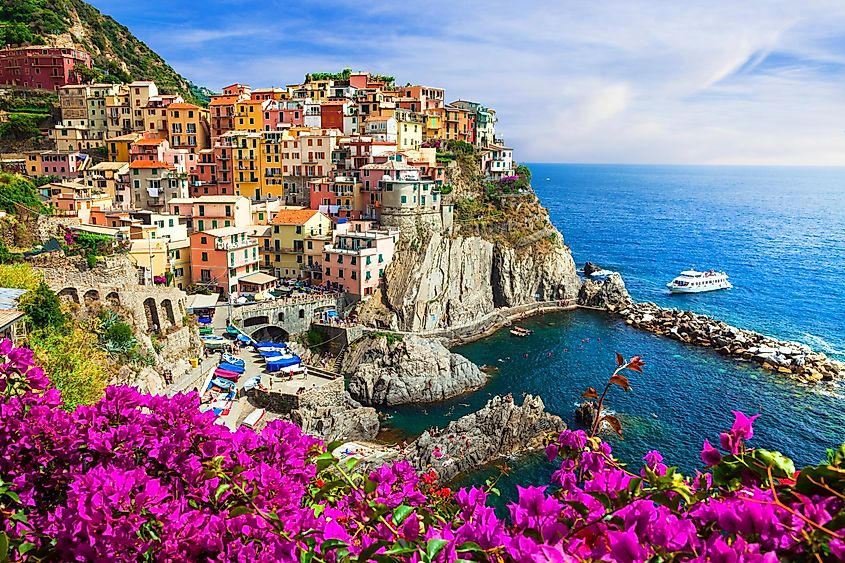
I will take some liberties with this first one and combine all five fishing villages, collectively known as Cinque Terre. These attractive (mostly) carless towns are built atop the rocky cliffs of the Italian Riviera. Listed from north to south, they are Monterosso (the largest and with the most beaches), Vernazza (one of the most popular, with its cute harbor and Ligurian houses), Corniglia (the centerpiece, surrounded by vineyards and olive groves), Manarola (another cute harbor filled with colorful boats), and Riomaggiore (one of the more accommodation-friendly of the bunch). Visitors can take a train or boat between each, or better yet, hike the connecting trail through the hills above the Ligurian Sea. Each town is only a few miles removed, and sometimes, there are even farmers selling freshly squeezed lemonade en route.
Courmayeur, Aosta Valley
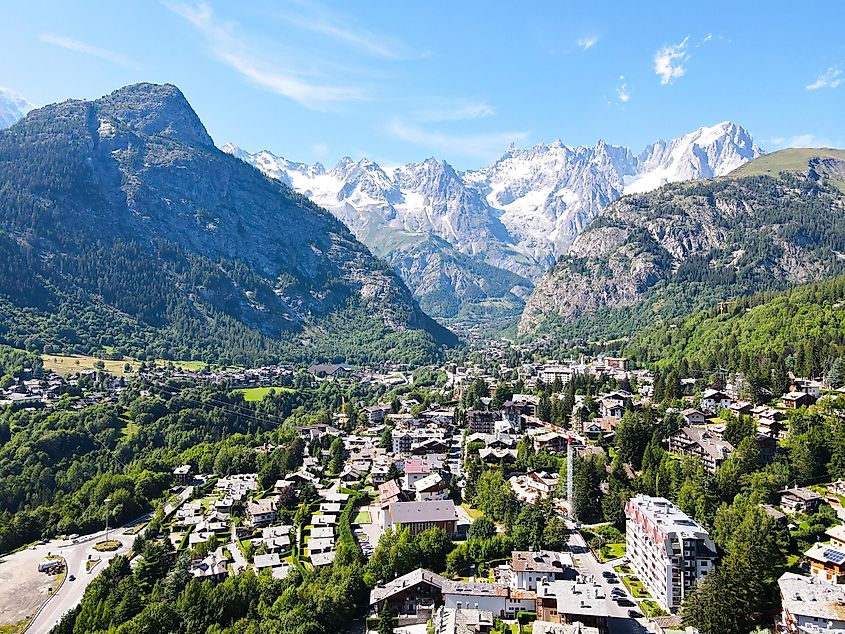
The alpine town of Courmayeur sits at the base of the highest mountain in the European Alps: Mont Blanc. It is not only a revered ski resort but a key stop along the Tour du Mont Blanc (one of the best hikes in the world) – a 105-mile hiking trail that circumnavigates the namesake peak. If you want to see the jaw-dropping vistas but aren't a fan of hiking or skiing, you can take the Skyway Monte Bianco cable car all the way up to 11,371 feet, where views of the equally famous Matterhorn join the snow-capped skyline. The fresh mountain air incites an exuberant spirit in the chalet-centric village. Tourists should expect to see all sorts of traditional festivals unfold throughout the year.
San Gimignano, Tuscany
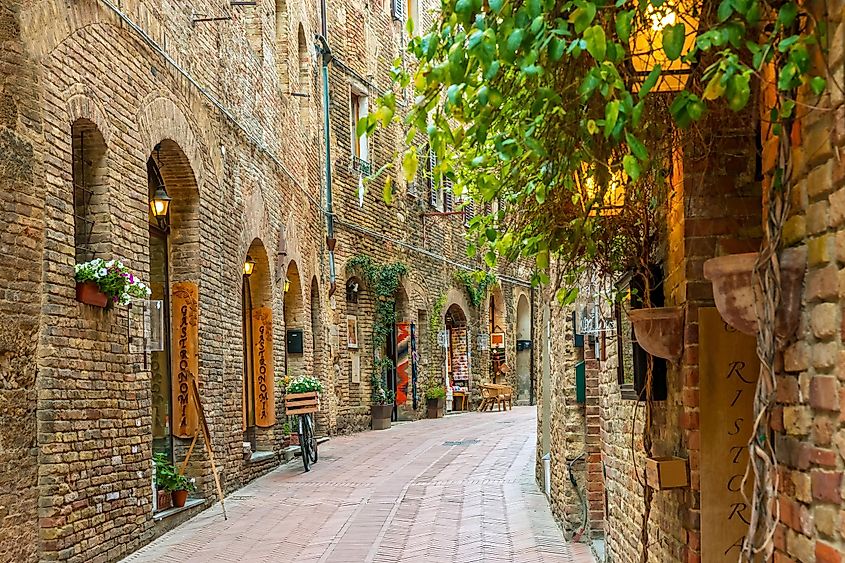
The entire historic center of this Tuscany hill town is a UNESCO World Heritage Site. San Gimignano, or San Gimignano delle belle Torri, is an ancient, walled, feudal settlement marked most distinctly by its 14 stone towers. It is estimated that in its prime (i.e., between the 11th and 13th centuries), there would have been as many as 72 of these medieval skyscrapers. Along with the surviving towers, there are several beautiful palaces perched amongst the otherwise pleasantly homogenous architecture and important selections of 14th/15th-century Italian art that can be viewed in the main cathedral and other religious/public buildings. Finally, San Gimignano once served as a key stop along the Via Francigena pilgrimage to Rome, thereby connecting visitors with a heritage similar to that of Spain's Camino de Santiago.
Positano, Campania
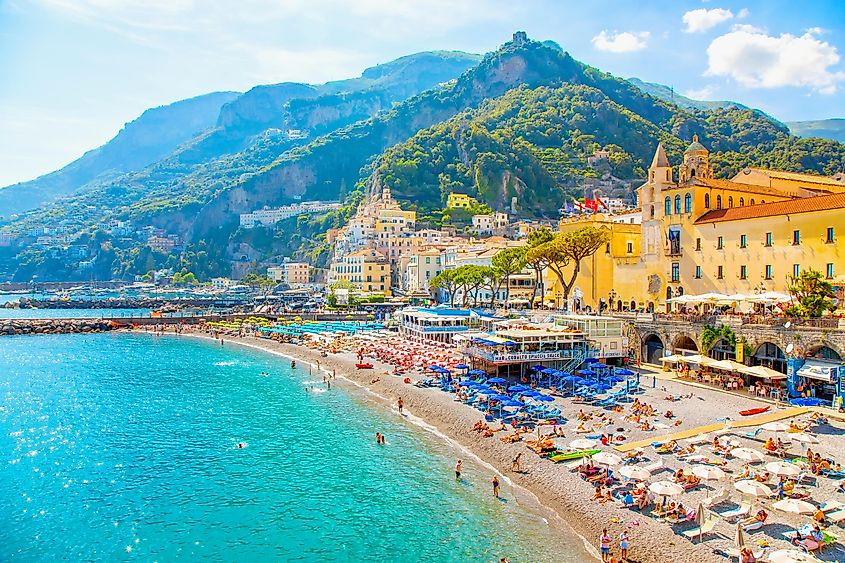
The entirety of Italy's Amalfi Coast (Costiera Amalfitana) is also a UNESCO World Heritage Site, owing to its "...outstanding cultural landscape with exceptional cultural and natural scenic values resulting from its dramatic topography and historical evolution." Anywhere along this 37-mile stretch between Naples and Salerno is, therefore, sure to impress, but if you can only go one place, stop in Positano. The pink, yellow, and white houses of this (nearly) vertical village rise from the crystalline waters of the Tyrrhenian Sea and into the cliffs of the Lattari Mountains. Not only is Positano a sight to behold, but its reputation as a resort and fashion town, combined with its la dolce vita (i.e., the good or sweet life) mentality, makes it extra charming.
Bosa, Sardinia
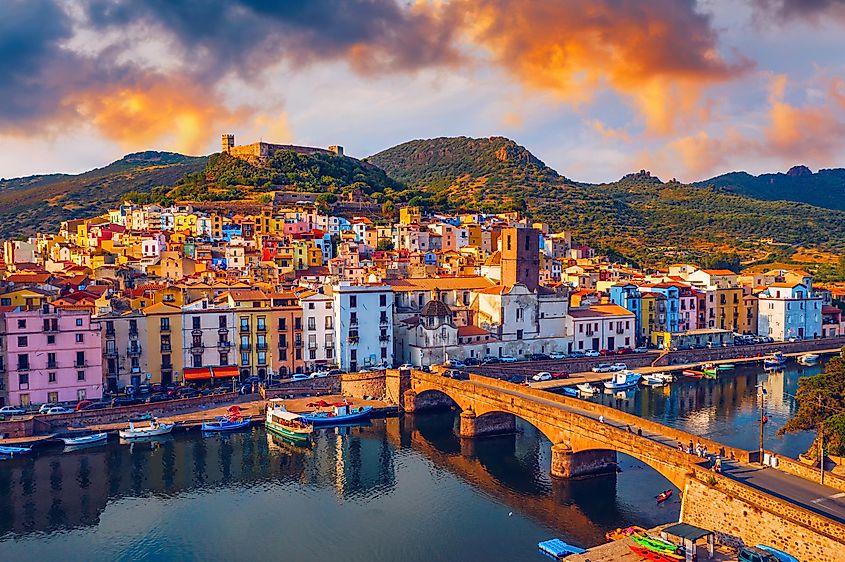
Popping over to Sardinia, the river town of Bosa is one of the island's main highlights. Split by the Temo River, just before it reaches the Sea of Sardinia, Bosa enjoys the quaint qualities of a commune staggered ever so slightly inland but still sits enticingly close to several coastal beaches. As seen from the hills above (where the 12th century Malaspina Castle resides), Bosa's ubiquitous pastel rooftops elegantly contrast the green landscape and vibrant blue waters in the near distance. But when viewed from the river's edge, the soft rainbow collage of Bosa's old town becomes even more playful amidst the paradisiacal setting. Settle into island time by casually perusing the churches and museums or paddling a bit of the Temo (Sardina's only navigable river).
Taormina, Sicily
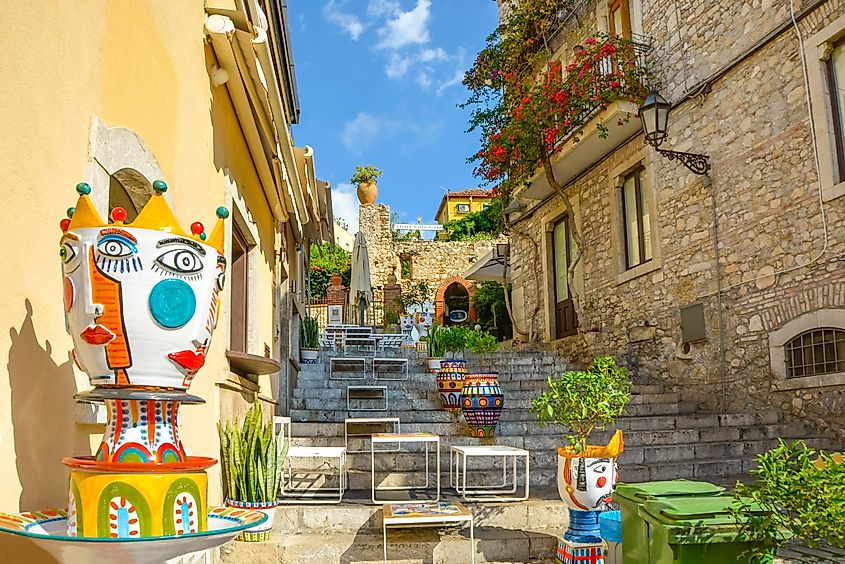
Located on the east coast of Sicily, Taormina was built atop Mount Tauro, approximately 800 feet above the Ionian Sea. Adding even more richness to the landscape/skyline is nearby Mount Etna – an active, often snow-capped volcano standing at 11,014 feet. Taormina's pleasant climate and cute pebble shorelines make it a big hit amongst summer tourists, but its history and culture are impossible to overlook. The Greco-Roman theater (Teatro Antico di Taormina), for instance, is one of the most photogenic monuments in all of Sicily. And despite the expected weathering since its construction in the 3rd century BC, this spectacularly scenic amphitheater is still a thriving concert venue. Savory Sicilian dishes are also the name of the game in these parts. Enjoy a light bite and espresso at a streetside cafe, or look forward to a late dinner at one of the Michelin-starred restaurants.
Treia, Marche
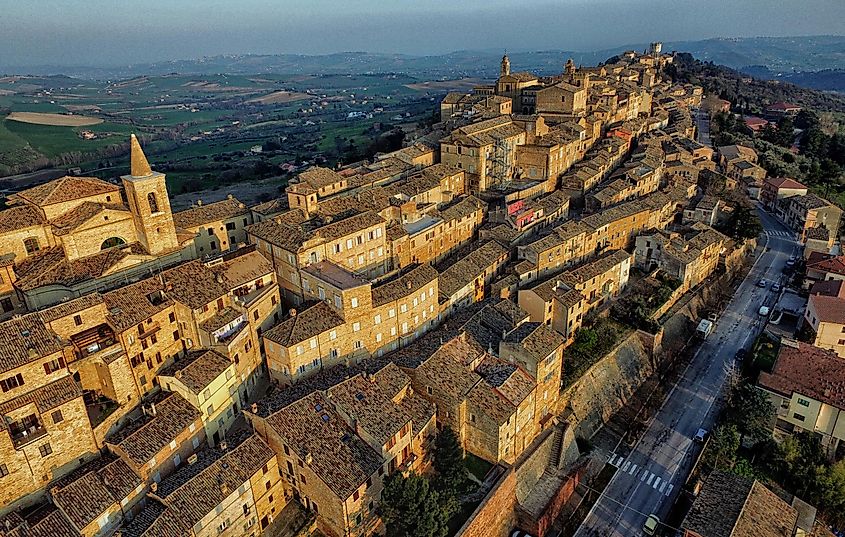
East-central Italy's ancient, fortified, hilltop town of Treia looks out on the Potenza River valley, offering panoramic views that include the Sibillini Mountains and the Adriatic Sea. Pass through one of the seven gates throughout the medieval walls and explore the cobblestone streets of the historic center, noting the mix of architectural styles that uphold the town's subdued, amber, brown, and beige aesthetic. When you reach Piazza della Repubblica, you will be flanked by the Accademia Georgica (antiquities library), the Palazzo Comunale (home of the Civic Museum, which includes Roman and Egyptian artifacts), and the Church of San Filippo Neri (one of the largest in the region) – not to mention the blue marble fountain and white marble balustrade that will invite you to once again take in the countryside vista.
Alberobello, Apulia
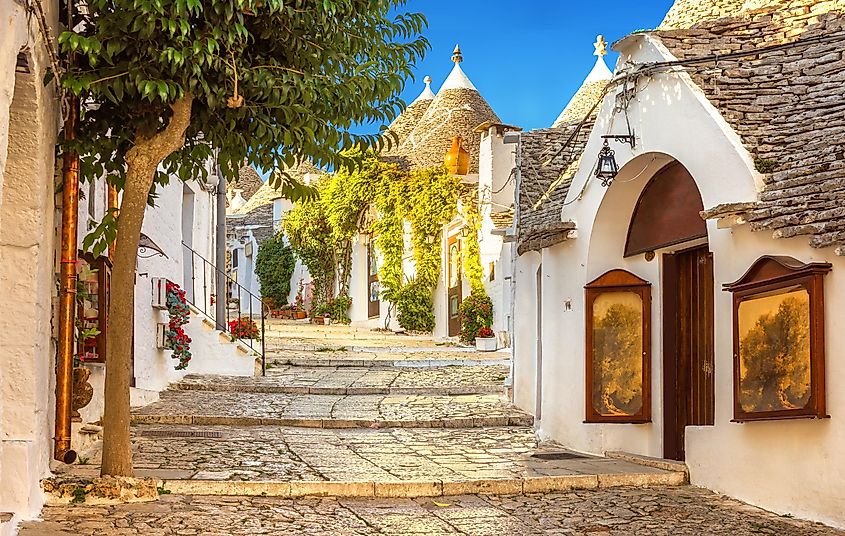
UNESCO loves Italy. And who can blame them? The trulli dwellings of Alberobello, a small town in the southern Apulia (or Puglia) region, are yet another standout World Heritage Site. These mortarless white limestone buildings are topped with conical roofs made of dark corbelled slabs, making them every bit as charming as they are culturally significant (this construction style persists from prehistoric times). While this inventive and adorable construction method exists elsewhere, Alberobello represents the highest concentration (i.e., over 1,500 structures) and best-preserved collections in the region. The town is divided amongst two hills, with the trulli (old town) occupying the western section and the new town the east. Both sections are designated as national monuments.
Polignano a Mare, Apulia
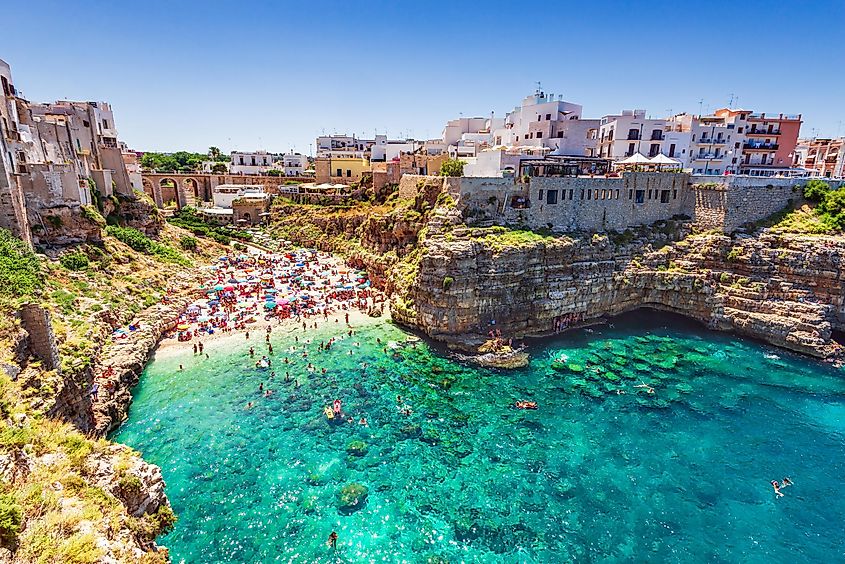
While we're in Apulia, let's bring it back to the coast one last time. Polignano a Mare is a beautiful seaport on the Adriatic Sea, with roots tracing back to the 5th millennium BC. The old town is perched upon limestone cliffs, where nearby caves have revealed the remains of prehistoric human settlements. The steep embankments and stark white buildings frame the town's most popular beach, Lama Monachile, which is nestled at the foot of a small cove (one of several in the region). Polignano a Mare has been awarded the coveted Blue Flag designation for demonstrating the impeccable cleanliness and sustainability of its shorelines. When you've had your fill of Vitamin D, turn your attention to the narrow, white-stone streets/alleys that are lined with flowers, trees, cute terraces, and poetic street art.
"The Beautiful Country" is a well-deserved nickname for this treasure of the Mediterranean. Italy has pristine port towns, mesmerizing medieval communes, purifying mountain villages, and essentially every other kind of picture-perfect setting you can imagine. Combine that with exceptional food and personable residents, and you have yourself a recipe for a special vacation. Italy has a lifetime's worth of attractive prospects, but start with one of these nine charming towns, and you'll instantly realize the true meaning of la dolce vita!
